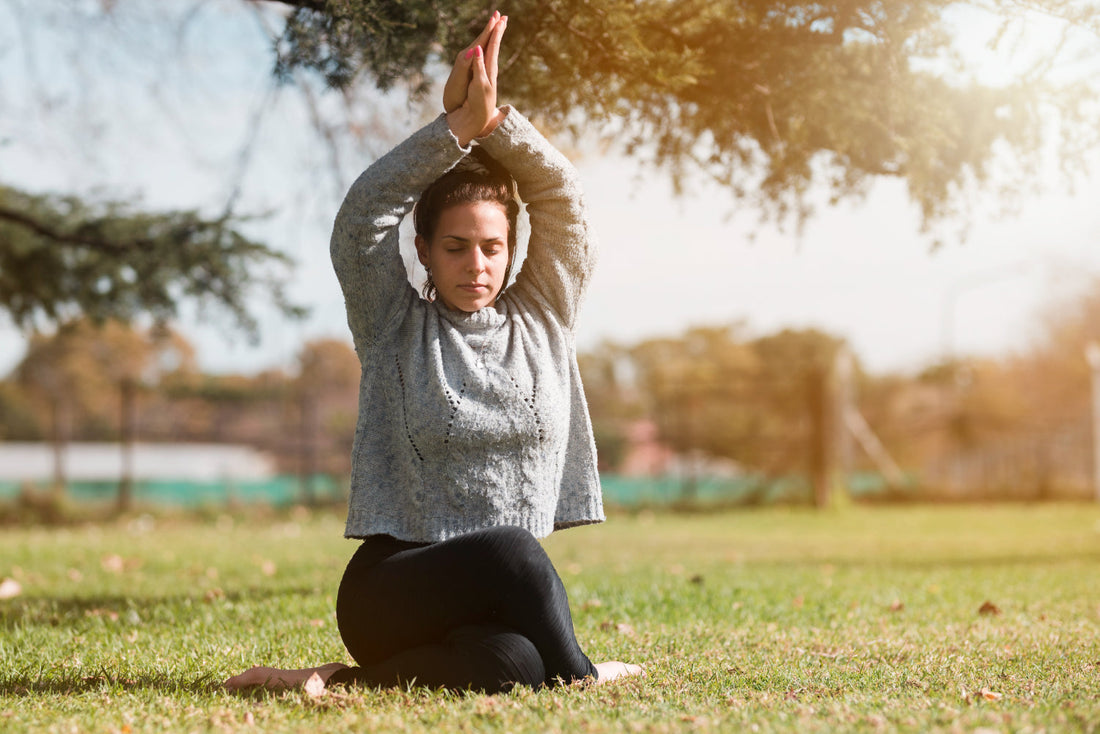Yoga is a great way to improve your physical and mental health. It’s important to practice yoga regularly to reap its benefits. But what is the best time to practice yoga? And how often should you practice?
Best Time of Day to Do Yoga
The best time to do yoga is the time that works best for you. Since the key to accessing all of yoga’s many benefits is consistent practice over time, you need to find the routine that fits your lifestyle and works with your schedule. This may change over time as your life changes.
For instance, you may have gone to yoga classes in the evening right after work for years. But then when you had kids, it made more sense to go early in the morning before work or during the day while they are at school. It doesn’t matter if you do yoga at different times on different days of the week, as long as you find a sustainable routine.
Let yoga fit into your schedule instead of trying to work your schedule around yoga. That being said, there are some benefits to practicing yoga at different times of the day.
Morning Yoga
Practicing yoga in the morning can give you a boost of energy and clarity and help set the tone for the rest of your day. Many people have routines that are more manageable or predictable to practice morning, making it easier to stick with a morning routine.
In addition, many people find that they have more energy for exercise in the morning compared to the end of a long day. Some people may also prefer to do yoga on an empty stomach to avoid cramps or indigestion. Energetic practices are ideal in the morning to keep you alert and boost energy levels.
You might opt for vinyasa flow classes that incorporate rounds of sun salutations or try invigorating backbends like wheel pose or inversions such as headstands.
Afternoon Yoga
Practicing yoga in the afternoon before dinner can help you destress from a busy morning and work up an appetite for your next meal. If you prefer to practice between mealtimes, be sure to wait about 2–3 hours after eating before you do yoga. In addition, your muscles may be more warmed up later in the day compared to first thing in the morning, when you may feel stiffer.
If your muscles are looser later in the day, it may be possible to work a little more on improving your flexibility compared to when you feel tight. Doing yoga in the afternoon can often mean you get the best of both worlds. If this is when you have more energy, it’s a good time for a challenging, vigorous practice. But if you need to wind down toward the end of your workday, it can also be more restorative.
Evening Yoga
Practicing yoga in the evening can help you unwind and relax your body and mind after a long day or stressful day. It can also help you sleep better for a good night. However, it’s important to avoid doing yoga right before bed, as it can be too stimulating and make it harder to fall asleep.
Instead, try practicing yoga at least a few hours before bedtime. Restorative yoga poses, such as forward folds and gentle twists, can be particularly helpful in the evening to calm the mind and body.
How Often to Do Yoga
It’s important to practice yoga regularly to reap its benefits. Research shows that just 20 minutes of yoga a day is still enough to reap the benefits of the practice. Although most yoga classes are 60 minutes, 45-, 75–, and 90-minute classes are available, as well as shorter options if you’re short on time.
Start doing yoga as often as your schedule allows. Even an hour every week is beneficial. Naturally, the more you do yoga, the more you’ll improve. In this case, however, consistency is more important than overall length. You’ll likely see more progress when practicing half an hour every day than two hours once a week.
Conclusion
In the symphony of life, yoga is the soothing melody that adapts to your unique rhythm. Whether you are a morning person to greets the sun in the morning or finds rejuvenation in the quiet moments of the evening, the mat becomes a space for connection, revitalization, and self-exploration with the proper guidance of a yoga teacher.
Roll out your mat, breathe deeply, and immerse yourself in this harmonious journey where time, frequency, and the benefits of yoga converge into a personalized experience just for you.






